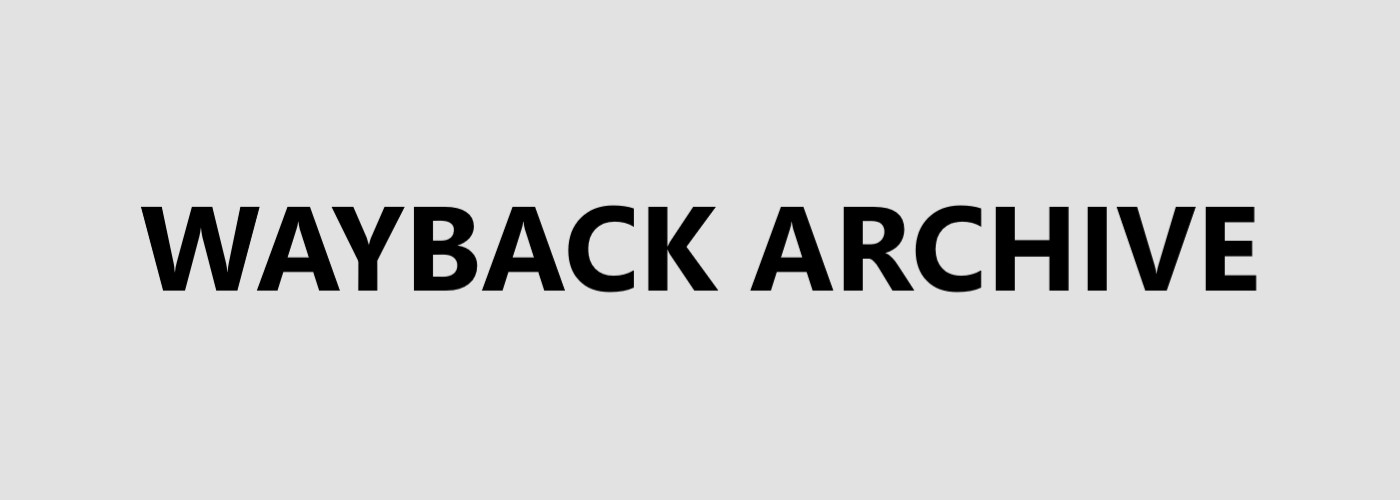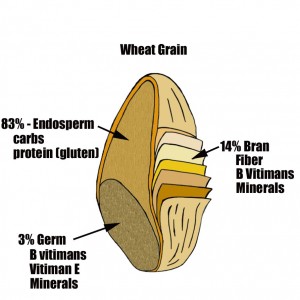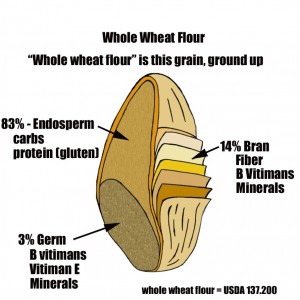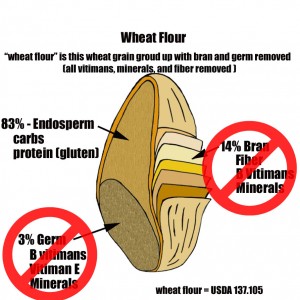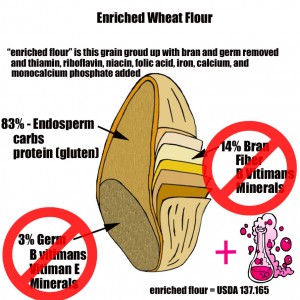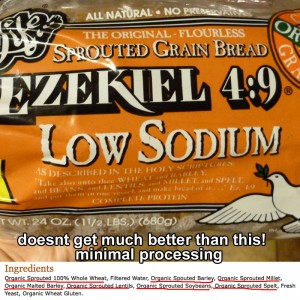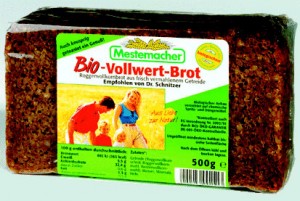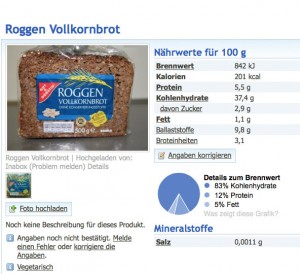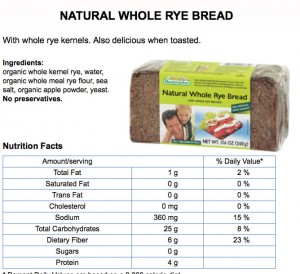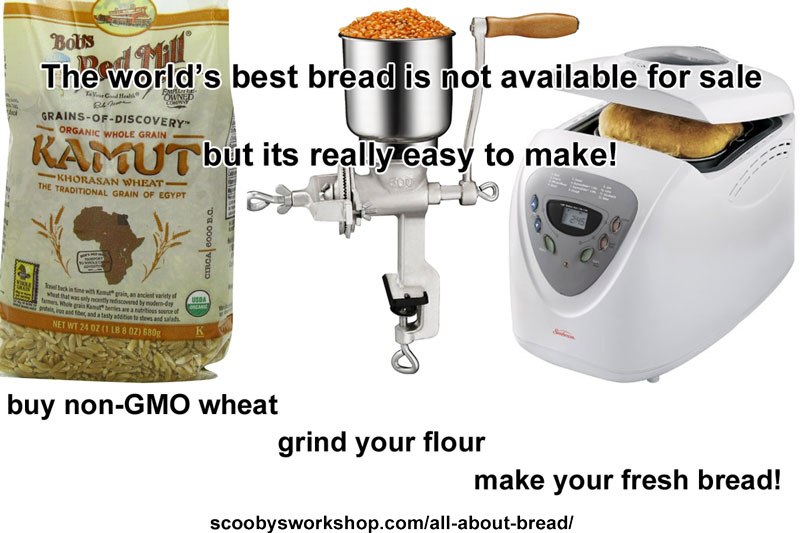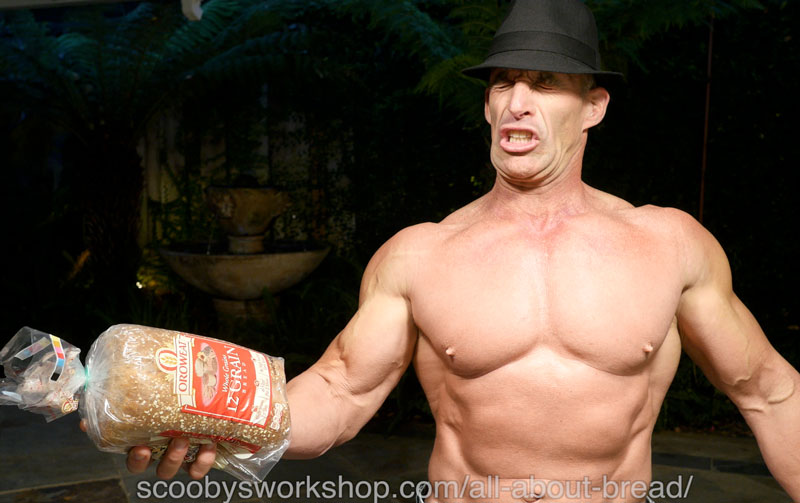All About Bread
Bread may be “the staff of life” but modern breads have taken the epitome of health and turned it into a junk food. Learn how to choose a healthy loaf! The bread that our great grandparents made was VERY healthy. I have fond memories of watching my grandfather on Saturday which was bread day. He would take wheat from the farmer down the street that had been drying in his basement, grind his own flour, then bake their bread for the week . The problem is that although all those pretty loaves in the grocery store may LOOK like the ones my grandfather made, nutritionally its like comparing twinkies to brocolli.
Is bread X healthy?
Let me explain something to you. You need to learn how to answer this question yourself. If you have to ask me or anyone else what is healthy, then you are not going to make it. I’m serious, you are not going to make it. PT Barnum was famously quotes as saying “Theres a sucker born every minute” and YOU are a sucker and people are going to take advantage of you. There is nothing more basic than bread and if you dont have the tools to be able to discern a healthy loaf from an unhealthy loaf then your bodybuilding progress, your health, and your wallet are all in danger. This page will give you the tools to answer the important “is bread X healthy” yourself!!!
Wheat 101
Wheat is not a single plant but many species with varying protein content, germ, and bran percentages. There are a lot of heirloom, wild wheats in the world that are wonderful … and none of them are used to make bread for your local grocery store shelves. Here are the types of wheat in America:
- Durum – Very hard, translucent, light-colored grain used to make semolina flour for pasta & bulghur; high in protein, specifically, gluten protein.
- Hard Red Spring – Hard, brownish, high-protein wheat used for bread and hard baked goods.
- Bread Flour and high-gluten flours are commonly made from hard red spring wheat.
- Hard Red Winter – Hard, brownish, mellow high-protein wheat used for bread, hard baked goods and as an adjunct in other flours to increase protein in pastry flour for pie crusts.
- Soft Red Winter – Soft, low-protein wheat used for cakes, pie crusts, biscuits, and muffins. Cake flour, pastry flour, and some self-rising flours with baking powder and salt added, for example, are made from soft red winter wheat.
- Hard White – Hard, light-colored, opaque, chalky, medium-protein wheat planted in dry, temperate areas. Used for bread and brewing.
- Soft White – Soft, light-colored, very low protein wheat grown in temperate moist areas. Used for pie crusts and pastry. Pastry flour, for example, is sometimes made from soft white winter wheat.
Components of a Wheat Grain
Wheat grains have three components:
- the hull on the outside, called bran, which has gobs of fiber, b vitimans and minerals.
- the Germ, b vitamins, vitiman E, and minerals
- the endosperm – carbs and protein
The endosperm has the carbs and protein but all the vitimans, fiber, and minerals are in the bran and germ. Trouble is, those are completely removed on most breads you find on the grocery store shelves in America! If you want a healthy bread, then the wheat used has to be simply ground up wheat with nothing removed – just like my grandfathers bread. So, how do you find the 10% of breads that really are healthy? You look at the list of ingredients! The terms that bakers use to describe the flour they use are strictly regulated. Before we cover that though, lets cover gluten which is what everyone these days loves to hate.
Gluten (wheat protein)
Gluten is the protein in the wheat and some people are allergic to it. Us bodybuilders like our protein so if you remove the gluten (protein) from the wheat, seriously, whats the point? Its just empty calories that are left if you buy wheat flour without gluten – just use oats instead. The gluten/protein content of a flour determines the crust of the bread. High protein content flour makes a hard, thick, crunchy crust and low protein flour makes a soft or crustless bread. For example, french bread with its hard crust is high in protein and cake flour which is designed to be very soft is nearly void in protein. If you want to get a high protein bread and don’t want to read the bread labels, then grab the loaf with the thickest, hardest crust and you will do pretty well. In fact, vegans use a product called “Seitan” which is just wheat gluten with the carbs thrown out. Because of the meat like texture, Seitan is used in many faux-meat products for vegans. Because its high in protein and low in carbs, its perfect for people wanting to be on low-carb diets who want to get some of their protein from plant sources. So what do you do if you want the fiber and goodness that grains provide but are allergic to gluten? Its tough because its not just wheat that has gluten. Rye which is also used for many breads has gluten as well. Honestly, to make bread without wheat or rye is more of a chemistry experiment than cooking. My advice would be to skip bread completely if you are allergic to gluten and have a bowl of oatmeal instead.
Wheat Flour
“Whole Wheat Flour” the golden standard
If you take a wheat grain and grind it up, it makes “whole wheat flour”. Pretty simple, thats what I watched my grandfather do in his basement. Lots of vitimans, minerals and fiber. A very healthy flour.
“Wheat Flour”, modern empty calories
If you take the bran off the wheat grain and remove the germ out and grind up the remainder (the endosperm) you get “Wheat flour”. “Wheat” because it comes from the wheat grain and “Flour” because anything that is ground up can be called flour. Trouble is “Wheat flour” has had all the vitamins, minerals and fiber removed leaving empty calories.
“Enriched Wheat Flour”, all that is wrong with modern nutrition
So the problem with the “wheat flour” above is that all the vitimans and minerals are gone because the bran and germ were removed from the flour. To “fix” this, its “Enriched wheat flour” to the rescue! Take the nutritionless “wheat flour”, add a bunch of chemicals, and it becomes “Enriched wheat flour”. This type of flour is a shining example of everything that is wrong with modern, agri-business driven mass marketed foods.
Is wheat bad for you?
Yes, wheat is bad for you but every single thing you eat or drink is bad for you in some way or another. The fish from the oceans have mercury, our rice supply has arsenic in it, our poultry and dairy products have pesticides in them. Many people seem to forget that you have to eat and drink something! Yes, there are people who have Celiacs disease and other wheat allergies. I am not trying to convince people with allergies to eat wheat, all I am doing here is helping normal healthy individuals find the healthy breads from the sea of nutritional garbage that lines grocery store shelves. If you have a wheat allergy, please consider taking a long hard look at your “gut health”. Fifty years ago people did not have all these food sensitivities to things like wheat and nuts. My gut feeling, pardon the pun, is that many of these allergies are the result of modern diets that are full of high fructose corn syrup (HFCS) and void of fiber that disturb the healthy bacterial profile in the intestines which leads to all kinds of health problems. It appears that fiber promotes more of the good bacteria in the gut and HFCS seems to promote more of the bad bacteria. I feel that wheat with its natural fiber is not the problem, its part of the solution along with other high fiber foods like oats, legumes, and vegetables like leafy greens, cauliflower, broccoli, spinach, squash, carrots and celery. Before you self-diagnose yourself as being allergic to wheat, please consider trying a high fiber diet without any HFCS for a few months before vilifying wheat.
You have to be careful too, “wheat” is not a single product, its a whole bunch of varieties. The highly cross-bread, high yield wheat varieties we have today bears little resemblance to the Emmer, Einkorn, and Kamut varieties of wheat that our great, great grandfathers grew. Even those who think wheat is nutritional evil would probably concede privately that the older varieties like Kamut or Einkorn are ok. Modern agribusiness is all about maximizing crop yields and high-yield dwarf wheat which was designed with years of cross breeding dominates the market now. Personally, I am not interested in eating GMO wheat sprayed with heavy doses of pesticides to increase the yield. It depends on how and where the wheat was grown if it is healthy or not and I don’t think you can make a blanket statement that “all wheat is healthy” or “all wheat is unhealthy” – it depends! I know of no mass produced breads that are made from the heirloom wheat varieties. If you want bread made from Kamut, Eikorn or Emmer then you have to make your grind your own flour and make your own bread at home which is a lot easier than it sounds – see the section below “The world’s healthiest bread”.
Bread and Low Carb Diets
Low carb diets are more popular than ever. Yes, low carb diets work … but ANY diet works. If you consume fewer calories than you burn off then you will lose weight – period. Here is the problem though, most diets fail in the long run because people just go back to their old, bad eating habits. Only lifestyle changes coupled with changing your food preferences will keep the weight off long term. Low carb diets are not maintainable over the long term for most people which is why people who have lost spectacular amounts of weight with low-carb diets see their weight rebound back to where it was. Even low-carb diet book authors seem to have trouble keeping the weight off long term. I do know some people who have succeeded with low-carb diets as a way of life but it takes a LOT of work to stay healthy because when you are carb limited, its really tough to get enough natural fiber – you have leafy greens coming out your ears :)
There is no single path to health, no single path to strength, and no single path to gaining muscle mass. So many people seem to get incredibly defensive in trying to prove to the world that their path is the best/only path. In my view, nothing in health and fitness is so simple. I think that you CAN be incredibly healthy without carbs as long as you eat massive amounts of high fiber, low carb vegetables. I think you can also be very healthy too following the high-carb route, as long as those carbs are GOOD carbs. The trouble is that the modern grocery store is stocked to the ceiling with highly processed, high glycemic, nutrition-less carbs that taste GREAT! The purpose of this page is to help those like myself who want to include carbs in their diet to find the healthy breads on the grocery store shelf.
How to choose a healthy bread
Read the ingredients list!!! If you want a healthy bread then the only type of flour mentioned in the ingredients list should be “Whole wheat flour” – no other kind! All breads need yeast, a bit of sugar for the yeast to grow, a bit of salt, and thats it. If there is any chemical sounding name or something that you don’t recognize in the ingredients list then DONT BUY IT! Here is an example of what you want to see:
Ingredients: whole wheat flour, water, yeast, sugar, salt
Doesn’t get much better than Ezekiel bread, for a store bought loaf anyway. The trouble with even the best of the loaves on the grocery store shelf is that they are made from modern, yield maximized, cross-bred to death wheat grains instead of the heirloom varieties like Kamut, Eikorn or Emmer.
This Whole Grains brand “100% Whole Wheat” Bread is good mass produced bread but the same comment as above applies. Its made from modern, yield maximized, cross-bred to death wheat grains instead of the heirloom varieties of wheat like Kamut, Eikorn or Emmer.
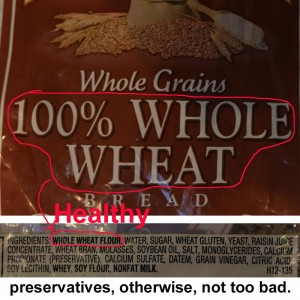
Here is an OK bread, its also “100% Whole Wheat”. Whole wheat but a lot of chemical garbage added. Everything from the third line of the ingredients down is chemical garbage.
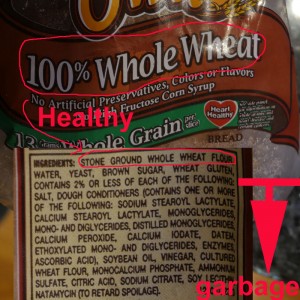
The following “12 Grain” bread isn’t horrible but its pretty bad and the deceptive marketing pissses me off. ‘Whole grains 12 grain bread” – Wow, that sounds REALLY healthy … but its NOT. Its only about half whole wheat, the rest is the nutrition-less wheat flour. There is more sugar than the 12 grains. Sprinkling trace amounts of whole grains on top of a loaf of wonderbread is like putting lipstick on a pig.
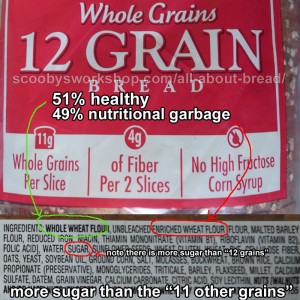
This “Health Nut” bread is what I call fake-healthy where they use all the marketing tricks in the book to deceive people into thinking they are buying something healthy when they are really buying wonderbread in a pretty wrapper. “The rich taste of walnuts, sunflower seeds and honey” – gee, that sounds SO healthy. Sprinkle some walnuts and sunflowers seeds on dog poop and guess what, its still dog poop.
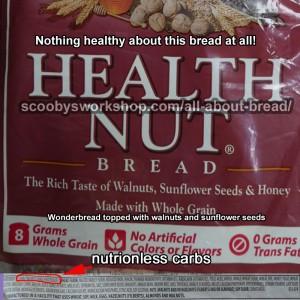
Drumroll, please … The epitome of empty calories and a shining example of everything that is wrong with modern agribusiness driven food production:
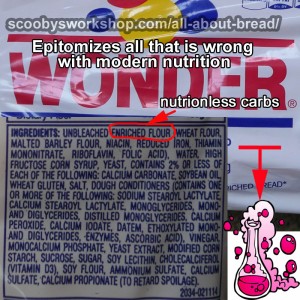
German Breads
If you live in Austria, Germany, or The Netherlands then consider yourself VERY lucky when it comes to healthy breads. Not only are preservative free, whole grain, fresh baked breads available at every subway station but even in the grocery store you can get whole grain breads. I have very fond memories of these heavy, whole grain, powerfully flavored breads like the Roggen Vollkornbrot, . High in fiber and minimally processed – very healthy and very cheap:
The worlds healthiest bread
So, we have talked about what breads are good to buy but there is another option that most of us have forgotten about – its easy to make your own bread from scratch! Here is how to make the world’s healthiest bread from scratch, the way that your great, great, great grandparents did in the 1800’s. If you eat a lot of bread, it will save you money as well. You can buy a bread maker for $60. I suggest taking it a step further though. Bread is only as healthy as the flour and when you buy a bag of stuff at the store, you really have no idea what you are getting. It might be genetically modified, it might be mislabeled enriched bleached flour being sold as whole wheat flour, or it might have lots of pesticides in it – you just dont know. Here is a wild idea, do what my grandfather did! Buy wheat and grind your own flour!!! Buy your own non-GMO wheat and then grind it with a $25 wheat grinder
! Even better than non-GMO wheat would be the older varieties of wheat that have not been manipulated with decades of cross breading to maximize yield – consider getting kamut wheat
or einkorn wheat
, they are more expensive because they are not mass produced but they are a lot healthier in my opinion.
CFR Title 21 Volume 2 Section 136-180
WTF? Thats the US law that governs what you can put in the list of ingredients. To protect consumers from deceitful tactics, what companies have to say in the list of ingredients is very tightly regulated. Here are the types of flour:
- 137.105 Flour.
- 137.155 Bromated flour.
- 137.160 Enriched bromated flour.
- 137.165 Enriched flour.
- 137.170 Instantized flours.
- 137.175 Phosphated flour.
- 137.180 Self-rising flour.
- 137.185 Enriched self-rising flour.
- 137.190 Cracked wheat.
- 137.195 Crushed wheat.
- 137.200 Whole wheat flour.
- 137.205 Bromated whole wheat flour.
- 137.211 White corn flour.
- 137.215 Yellow corn flour.
- 137.220 Durum flour.
- 137.225 Whole durum flour.
- 137.250 White corn meal.
- 137.255 Bolted white corn meal.
- 137.260 Enriched corn meals.
- 137.265 Degerminated white corn meal.
- 137.270 Self-rising white corn meal.
- 137.275 Yellow corn meal.
- 137.280 Bolted yellow corn meal.
- 137.285 Degerminated yellow corn meal.
- 137.290 Self-rising yellow corn meal.
- 137.300 Farina.
- 137.305 Enriched farina.
- 137.320 Semolina.
- 137.350 Enriched rice.
Of the most interest is 137.200 “Whole wheat flour” because that is the ONLY thing we want to see in our list of ingredients when we are buying bread. Here is what the FDA says about what “whole wheat flour” is:
§ 137.200 Whole wheat flour.
(a) Whole wheat flour, graham flour,
entire wheat flour is the food prepared
by so grinding cleaned wheat, other
than durum wheat and red durum
wheat, that when tested by the method
prescribed in paragraph (c)(2) of this
section, not less than 90 percent passes
through a 2.36 mm (No. 8) sieve and not
less than 50 percent passes through a
850 μm (No. 20) sieve. The proportions
of the natural constituents of such
wheat, other than moisture, remain
unaltered. To compensate for any natural
deficiency of enzymes, malted
wheat, malted wheat flour, malted barley
flour, or any combination of two or
more of these, may be used; but the
quantity of malted barley flour so used
is not more than 0.75 percent. It may
contain harmless preparations of a-amylase
obtained from Aspergillus oryzae,
alone or in a safe and suitable carrier.
The moisture content of whole wheat
flour is not more than 15 percent. It
may contain ascorbic acid in a quantity
not to exceed 200 parts per million
as a dough conditioner. Unless such addition
conceals damage or inferiority
or makes the whole wheat flour appear
to be better or of greater value than it
is, the optional bleaching ingredient
azodicarbonamide (complying with the
requirements of § 172.806 of this chapter,
including the quantitative limit of
not more than 45 parts per million) or
chlorine dioxide, or chlorine, or a mixture
of nitrosyl chloride and chlorine,
may be added in a quantity not more
than sufficient for bleaching and artificial
aging effects.
